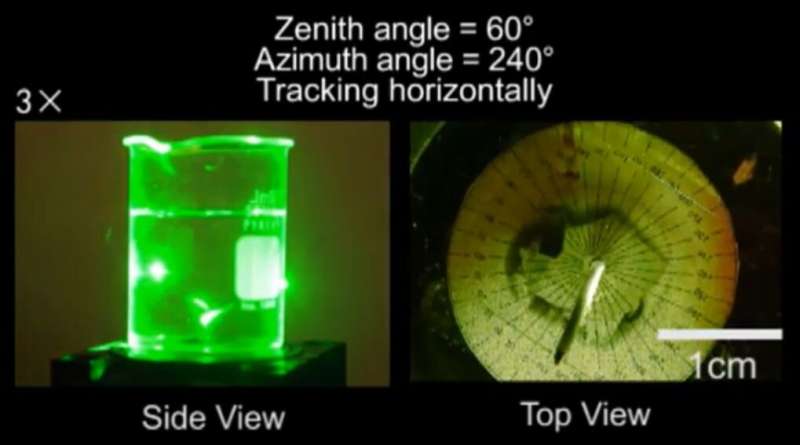November 5, 2019 report
An artificial sunflower that bends toward the sun

A team of researchers from the University of California and Arizona State University has found a way to create a material that demonstrates tropistic behavior. In their paper published in the journal Nature Nanotechnology, the group describes their material and how well it worked when tested. Mingming Ma with University of Science and Technology of China, has published a News & Views piece outlining the work by the team in the same journal issue.
Many people have noticed that some flowers are able to keep their faces pointed at the sun even as the sun moves across the sky over the course of a day—an example of phototropism. Sunflowers are likely the most well-known example. Scientists have developed similar technology, but it involves nastic behavior—what they would prefer is to be able to create a synthetic material that follows a light source by simply bending toward it, unaided, in real time. In this new effort, the researchers claim to have achieved that goal. They created a polymer material that bends toward a light source with no other contributing factors.
The researchers created the polymer by combining a photo-responsive nanomaterial with a thermo-responsive material. The first absorbs light and converts it to heat, while the second contracts when exposed to heat. The researchers fashioned their polymer into the shape of a flower stem and then fired a beam of light at it from different angles. They report that the stem bent to point directly at the light source. This happened due to the light being absorbed at a given location on the stem, at a given angle, which was converted to heat. The heat forced the material on the side of the light to contract, resulting in the stem bending towards the beam of light. This continued until the stem bent to such a degree that its top and length partially obscured the beam of light—at that point, the stem became fixed in place. The team then placed a "bloom" onto the tip of the stem, filling out the flower form. In their case, the flower was a small solar panel. The researchers suggest their device could be used to keep solar cells pointed at the sun, improving their efficiency.
More information: Xiaoshi Qian et al. Artificial phototropism for omnidirectional tracking and harvesting of light, Nature Nanotechnology (2019). DOI: 10.1038/s41565-019-0562-3
Journal information: Nature Nanotechnology
© 2019 Science X Network





















